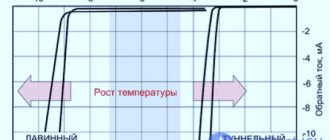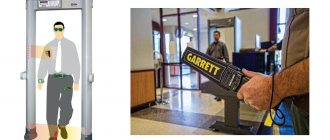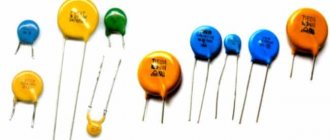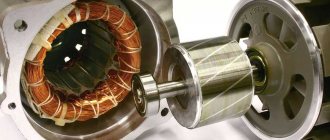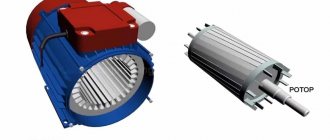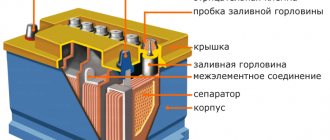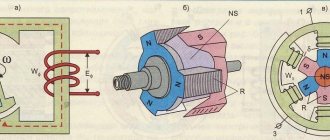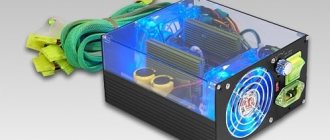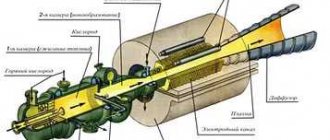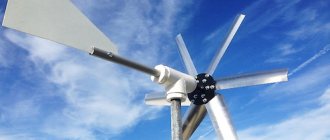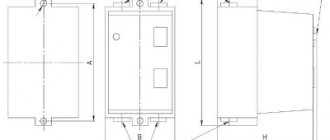This household appliance has been helping to dry hair for more than 75 years - the first example of this electrical product appeared in the early 40s of the last century. Today there is a hairdryer in almost every home, and everyone knows the rules for its use. But the internal structure of a hair dryer is familiar only to some - we will try to fill this gap in knowledge.
How the hair dryer works
The body of budget and most mid-budget devices is made of plastic. And not simple, but heat-resistant, capable of withstanding decent temperatures. More expensive premium models have a metal body. Unlike plastic analogues, the latter does not deform and heats up noticeably less during operation.
The purpose of the device is to heat the incoming air to the required temperature and dry the object, be it hair, in the case of a household appliance, or, for example, wallpaper, in the case of hair dryers. The latter can heat the air up to 650 degrees, while a good half of ordinary home models are limited to 80⁰C.
Hair dryers are equipped with various attachments
The versatility of the device is added by various attachments that are installed on the nozzle. Thus, the device can be turned into a hair dryer comb or hair dryer brush. In addition, the design of the nozzles can be very different, which significantly expands the scope of application of the device.
Schematic diagram
Diagnosis of failure As a rule, a hair dryer fails due to non-compliance with operating requirements. Next, you can begin to replace those parts that have failed.
Diagnostics and repair of a construction hair dryer Let's consider the structure of electric motors and how exactly it is necessary to diagnose electrical machines, as they are commonly considered in the section on electrical engineering.
The main heater R1 is turned on by switch SA2 and also has two gradations: 1 - less heating is connected in series with the VD2 diode and 2 - more heating is excluded from the VD2 diode. On the handle there are control switches for regulating the functions of the hair dryer. A self-made hot air gun can be used for the following construction operations: welding film coating joints; use when working with wood; welding of plastic products; removal of layers of glue, linoleum and plywood on the surface of products; lighting charcoal in a barbecue.
We will list some of them below: Possibility of using various attachments. This device has been drying our hair for more than 75 years; its first model appeared in the 1920s. Winding a nichrome spiral In order to wind a spiral from nichrome wire, you must first determine the length of the cylindrical rod or tube on which you will wind it. The ends of the nichrome wire need to be brought out. A hairdryer can be used when resining wooden skis, removing old paint, blowing sawdust off a workbench, dispersing mosquitoes and husbands, drying things, cooling a frying pan with dumplings, and as a fan on hot days. There should be three wires that need to be connected to the mode switch terminals.
The device and its basic principles
If the entire device is made by hand, then it is better to make the handle from wood or thick PCB. Nichrome is usually used as a spiral material.
The high resistance heater winding has broken. Diagnosis of failure As a rule, a hair dryer fails due to non-compliance with operating requirements. For a more accurate diagnosis, you should use a tester. Electric motors in hair dryers are designed for voltages of 12, 24 and 36 Volts; only very rare models use electric motors with Volt power, in which case the voltage from the network is directly supplied to the electric motor.
Drill holes with an electric drill. When you turn it on for the first time, you should listen carefully and sniff to see if there is a short circuit or a burning smell. Return to contents Safety precautions When working with self-made electrical appliances, you need to remember safety precautions and follow all the rules. The InterTul technical hair dryer stopped turning on. Repairing the hair dryer, the spiral is broken INTERTOOL Repair
Design Features
The set of basic elements of any hair dryer - household or construction, cheap or expensive - is not much different. Critical difference in the quality of parts. Some models use mediocre metals and plastics, while others boast the presence of high-tech materials, such as titanium coating and soft-touch plastic.
Structural elements of a hair dryer
The main design element is the electric motor. Modern technology is based on a low-voltage collector base (12-18 V) with a voltage rectifier. The spiral of the device can have several windings, which depends on the number of modes: ordinary models have two or three.
Hair dryer heating coil
The heating element requires good airflow, especially for powerful devices, so the fan not only draws in air for subsequent heating, but also acts as a cooling system. If the temperature inside the case approaches critical, the hair dryer turns off automatically. A thermostatic relay with a fuse is responsible for this. Let's take a closer look at their work.
Thermostatic relay
The part includes two contacts located on a bimetallic platform. When the hair dryer is working and the temperature has reached a critical point, the plates heat up and the power circuit opens. Afterwards, when the device has cooled down, the contacts are reconnected and the device can be used again.
Hair dryer thermostat
The thermostatic relay, like other components, can be of different quality. In more expensive models it works like a charm, while in budget devices it can often turn off for no apparent reason.
Fuse
The relay can be called the protection of the first line, while the fuse is the last. If for some reason the thermostat does not work, then after some time the equipment is de-energized by a fuse. It is located, as a rule, next to the thermal relay, less often - in the handle area.
The thermal fuse is a one-time use item and cannot be repaired. Depending on the brand of equipment, the resistance of the element changes, along with the shape. You can buy a fuse at almost any specialized point of sale. Some exotic species are worth looking for in service centers where equipment is serviced.
Fuse for a hair dryer
As for other elements - the power cord and button, here everything also depends on the specific model. More expensive solutions have a flexible and reliable cable, while budget options are constantly twisted and easily broken. In a good half of cases, the button, in addition to turning on the device, serves as a mode switch.
Structural elements and operating principle
The design of the device is divided into internal and external elements. To make the case, durable plastic is used that can withstand minor environmental loads. There is a small fan inside. It works by driving a motor. It also includes additional heating elements. Nichrome is used for their manufacture.
The functioning and principle of operation of a hair dryer for humans will also be clear. Air is supplied to the hair through the operation of a fan. The flow can be heated to the optimal temperature. Thanks to this, it is possible to significantly speed up the process. Air is also concentrated on a specific object using a constriction nozzle.
The nozzle in a hair dryer can be closed with various attachments. A comb or round brush is also placed in this place. With their help, you can easily and quickly process even the longest hair. The design of the comb may be different. It directly depends on the result that needs to be obtained during installation. The fan is protected using fine mesh. It prevents hair and other elements from being sucked into the unit. Thanks to this, it is possible to prevent breakdowns and significantly extend the service life.
Important! The AC motor in the device allows you to switch the speed and intensity of heating. The adjustment is made using special switches located on the handle of the hair dryer.
The circuits of modern models are almost the same.
However, there are a couple of nuances that cannot be ignored when choosing a device:
- Fan blades;
- Motor powered by electric drive;
- The air is heated by a special spiral;
- Additionally, thermal protection should also be used;
- On the handle there is a start button and a lever for changing speeds;
- The device is powered through a special cord.
The fan for the hair dryer is additionally connected to the main components. The circuit also includes a heating element. The optimal solution is to use a collector-type base. For high-quality work, a fan with a power of 12 to 18 V will be sufficient. Some manufacturers prefer to plant the propeller firmly and deeply. The heating element is made only from fireproof material. It is fixed to the body using special resistant wire threads.
It is also possible to use special spirals. It is allowed to use several windings simultaneously. Thanks to this, the hair dryer switches between modes.
However, the circuit must also include a step-down winding.
There are various schemes for interaction between the motor and the fan. The heating element must be located in at least two windings. The spirals have constant contact with the air flow, which allows for efficient cooling. If overheating occurs, the built-in protection immediately starts and the fan stops working. However, it is most often used only on expensive and famous models. The function is available on all Philips and Rowenta hair dryers.
Typical faults
Let's consider the reasons for the failure of the main parts, because the failure of any of them guarantees the failure of the entire product, since it will not be possible to use it further without repair. You can carry out simple diagnostics yourself if you know the most typical problems of these household appliances.
- The hair dryer does not turn on. It is necessary to check the serviceability of the current supply cord: perhaps its frequent kinks have led to an internal break in one of the wires. If a breakdown is detected, the cord must be replaced. There may be poor contact inside the product; you need to check the entire electrical installation; if repairs are required, contact a specialist. If the start button or switch is faulty, it should be replaced. Well, when the reason is in the electric motor, only a master can check it. Replacing or repairing the motor is impractical; it is cheaper to buy a new hair dryer.
- The product suddenly turned off - the fuse has blown, you need to check it and replace it. If the overheating protection has tripped, you need to wait half an hour and turn on the product again.
- There is no way to turn off the hair dryer - the start button or mode dial is faulty. Unplug the product from the outlet and call a technician.
- The fan does not spin: if everything is normal with the energy supply, then there is hair wrapped around the shaft, or there is a lot of foreign debris on the impeller blades - clean the shaft and blades.
- The air flow does not heat up - check the spiral or threads; most likely, a break has occurred. The correct solution would be to replace the spiral rather than repair it - there is no guarantee that the defect will not recur.
- Air does not pass through the device - the air intake or the installed cleaning filter is clogged. Unplug the device, disassemble and clean the grille from lint and dust with a soft brush. If the product has a filter, then unscrew the back of the case, carefully remove the filter and clean it - act very carefully so as not to damage the delicate device.
- Sometimes when the overheating protection system is triggered, a burning smell appears; the cause could be dust and poplar fluff that got on the coil. It is necessary to clean the heating element and turn on the product again; if a similar defect appears again, contact the service center.
If your home handyman easily understands electrical household appliances, then you will not need the services of professional craftsmen - all of the listed failures can be eliminated yourself.
Causes of malfunction and ways to eliminate them
There are several types of faults that you can fix yourself at home. Let's take a closer look at them. Note! Any work must be carried out with the hairdryer unplugged.
Problem with the cable: no power is supplied and the hair dryer does not start
No voltage is supplied. Most likely the problem is with the power cable.
Before repairs, you need to carefully inspect the cable along its entire length, starting from the power plug and up to the housing, for visible damage. If they are present, you need to cut out the damaged area and solder the ends of the cable. Usually this turns out to be the only malfunction, and after fixing it, the hair dryer works again.
Carefully inspect the power cord and solder damaged areas.
The fan does not spin at all or does not pick up speed quickly enough
There may be a problem with the engine. Most often this occurs due to hair wrapped around the motor shaft. To remove them, you need to dismantle the impeller. The same must be done if you need to install a new motor shaft or lubricate it. Grab the base of the impeller with your fingers, pull it away from the hair dryer and remove it.
On my own behalf, I would like to add that the most convenient way to check an electric motor for your own safety is to dismantle it and then connect it to a power supply that is protected from a possible short circuit. If the motor does not rotate, check the windings and their integrity using a multimeter. If problems are found with the winding, it is better to simply install a new motor. Of course, you can try to rewind the old one yourself. But this is more likely to be suitable for your own entertainment, to improve fine motor skills.
A multimeter will help you identify problems with the winding
Video: removing the fan from the hair dryer motor
Engine malfunction: smell of burning wiring, sparks slipping
Sometimes when using a hair dryer it smells like something is burning. In such cases, even the blown air may be too hot. The simplest reason is that the motor shaft is wrapped in hair. They need to be removed urgently and carefully. They can melt and damage the spiral, which will lead to engine failure. The same hair, when burned, can cause sparks.
A burning smell or sparks from a hair dryer may indicate engine problems.
By the way, if the hair dryer sparks quite strongly, then it is better to replace the motor with a new one. You can disassemble the hair dryer and carefully wipe its parts with alcohol. After this, be sure to wait until the device is completely dry before turning it on again. This method helped me, but not for long. In the end, it turned out to be easier to install a new engine.
Heating element malfunction: hair dryer blows cold air rather than hot air
In this case, most likely, the coil in the hair dryer is burnt out. Usually its break can be seen with the naked eye, without using a multimeter. There are several ways to repair a spiral.
- Take a thin tube made of copper or brass, place the ends of the spiral into it on both sides, and crimp with pliers.
- The spiral is held on a heat-resistant frame consisting of plates that do not conduct current. In the plate you need to use a pointed object to make a hole with a diameter of 2–3 mm, and install a short bolt and washer of suitable size into it. Place the ends of the spiral under this washer and tighten well.
- The torn ends can also be thrown over each other or twisted together. This method is not as reliable as the previous ones. This is due to the fact that the place on the spiral, repaired by casting or twisting, often overheats greatly due to increased resistance and usually burns out quickly.
- If you have an old donor hair dryer whose coil is in working order, disassemble it and replace the part.
- The finished part can be purchased in specialized electronics stores or ordered in an online store. You can also wind the spiral yourself from nichrome thread. Order the material on a popular online platform.
Video: how to repair a burnt hair dryer coil
Safe Operation
In order not to visit the service center frequently and save time and the family budget, you must strictly follow all operating requirements:
- Use only standard, factory-made extension cords.
- Inspect the cord before each use of the product and do not wrap it around the handle when storing.
- You can only use the supplied attachments that come with the kit.
- Do not use the product in a room with high humidity and do not expose it to water.
- Install a special fine-mesh filter in the air intake to prevent hair from being sucked into the device.
- If any malfunction occurs, immediately disconnect the product from the electrical network.
- Do not pull the cord from the outlet or carry the device by the cord. Remember that the wires inside are not steel, but copper, which can be damaged by mechanical stress.
- Do not overheat the hair dryer if you need the device for long-term use - purchase a professional device that is designed to last for a long time.
- Before storing the device, you must give it time to cool for at least half an hour.
- The product must be stored in a dry place, the drawer must be locked.
If you follow all the recommendations exactly, your hair dryer will work without repair, and your hair will look flawless and stylish.
Electrical circuit of a hair dryer
Let's look at the electrical diagram \Fig. 1\ of a hair dryer:
Fig.1
One diagonal of the diode bridge is connected to an external 220V AC voltage source.
The other diagonal of the diode bridge is connected to the electric motor.
The electrical circuit consists of the following elements:
- toggle switch that implements the temperature control mode - K1;
- a toggle switch that controls the rotation speed of the electric motor rotor \blowing speed control\ - K2;
- Toggle switch for turning off heating elements - K3;
- electric motor \fan\ - M;
- capacitor - C;
- heating elements - R\TEN\;
- diodes - VD1, VD2.
Through a diode bridge circuit \one diagonal of the bridge\ the rectified current of two potentials \+,-\ is supplied to the electric motor. When moving from the anode to the cathode, the current flows at a positive half-cycle of the sinusoidal voltage.
Two capacitors connected in parallel in the electrical circuit serve as additional smoothing filters.
The blowing speed occurs due to the variability of resistance in the electrical circuit, that is, when the speed toggle switch is switched to the highest resistance value, the rotation speed of the electric motor rotor decreases due to a voltage drop.
The number of heating elements \heaters\ in this scheme is four. The temperature regime of the hair dryer is controlled by a temperature control toggle switch.
Heating elements in an electrical circuit have different resistances; accordingly, the heating temperature when switching from one section of the electrical circuit to another - heating of the heating elements will correspond to its resistance value.
The general appearance of a construction hair dryer with its names of individual parts is shown in Fig. 2
Fig.2
The following electrical diagram of a construction hair dryer \Fig. 3\ is comparable to the electrical diagram of Fig. 1
There is no diode bridge in this electrical circuit. Controlling the blowing speed and controlling the temperature regime occurs when switching from one section of the electrical circuit to another, namely:
- when switching to a section of an electrical circuit - consisting of a diode;
- when switching to a section of an electrical circuit that does not have a diode.
When current flows in the anode-cathode junction of the diode VD1, which has its own resistance, the heating element2 will heat up according to two resistance values:
- resistance at the transition anode - cathode of diode VD1;
- resistance of the heating element \TEN2\.
When current flows in the junction, the anode - cathode of diode VD2, the voltage supplied to the electric motor and heating element1, will take the lowest value.
Accordingly, the rotation speed of the electric motor rotor and the heating temperature of the heating element for a given section of the electrical circuit will correspond to the direct transition of the current of the diode VD2. The heating of the heating element \TEN1\ for a given section also depends on its internal resistance, that is, the resistance of the heating element is taken into account.
Fig.3
Device [edit | edit code]
A hair dryer is usually made in the form of a piece of pipe, inside of which there is a fan and an electric heater. Often the hair dryer body is equipped with a pistol grip.
The fan draws air through one of the sections of the pipe, the air flow passes by the electric heater, heats up and leaves the pipe through the opposite section. Various nozzles can be installed on the outlet section of the hair dryer pipe to change the configuration of the air flow. The inlet section is usually covered with a grill to prevent large objects, such as fingers, from getting inside the hair dryer body.
A number of hair dryer models allow you to adjust the temperature and air flow rate at the outlet. Temperature regulation is achieved either by switching on a different number of heaters in parallel, or by using an adjustable thermostat, or by changing the flow rate.
